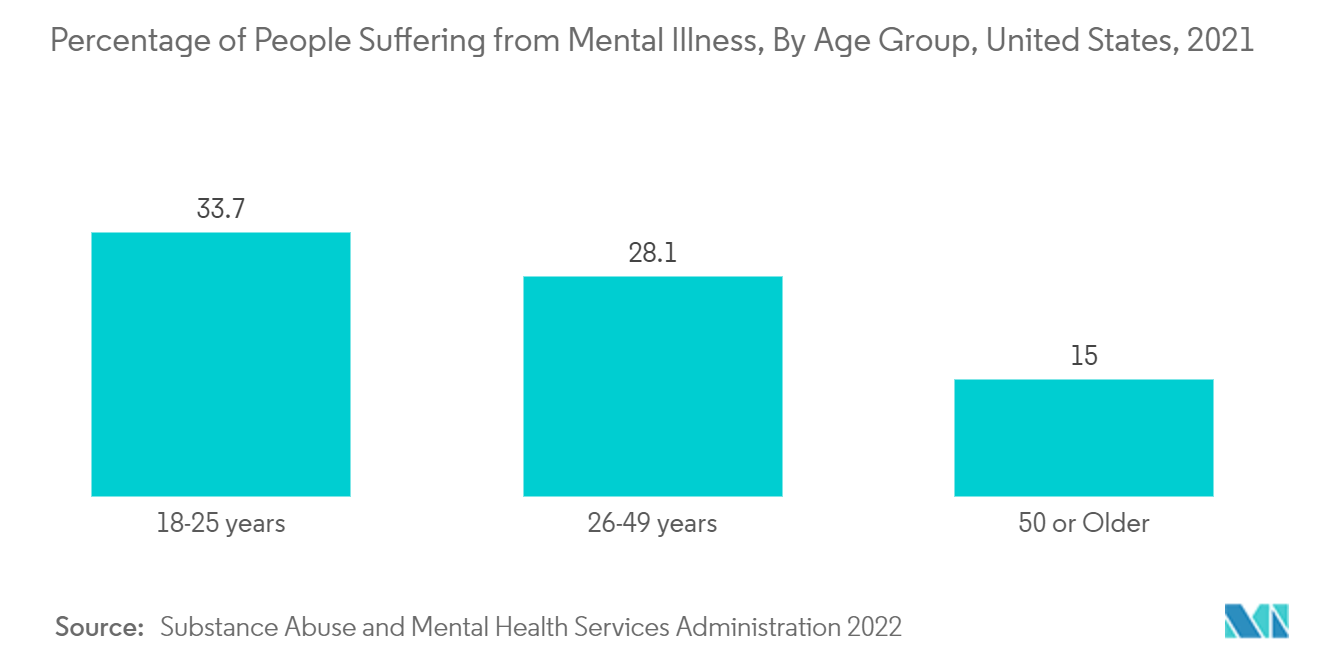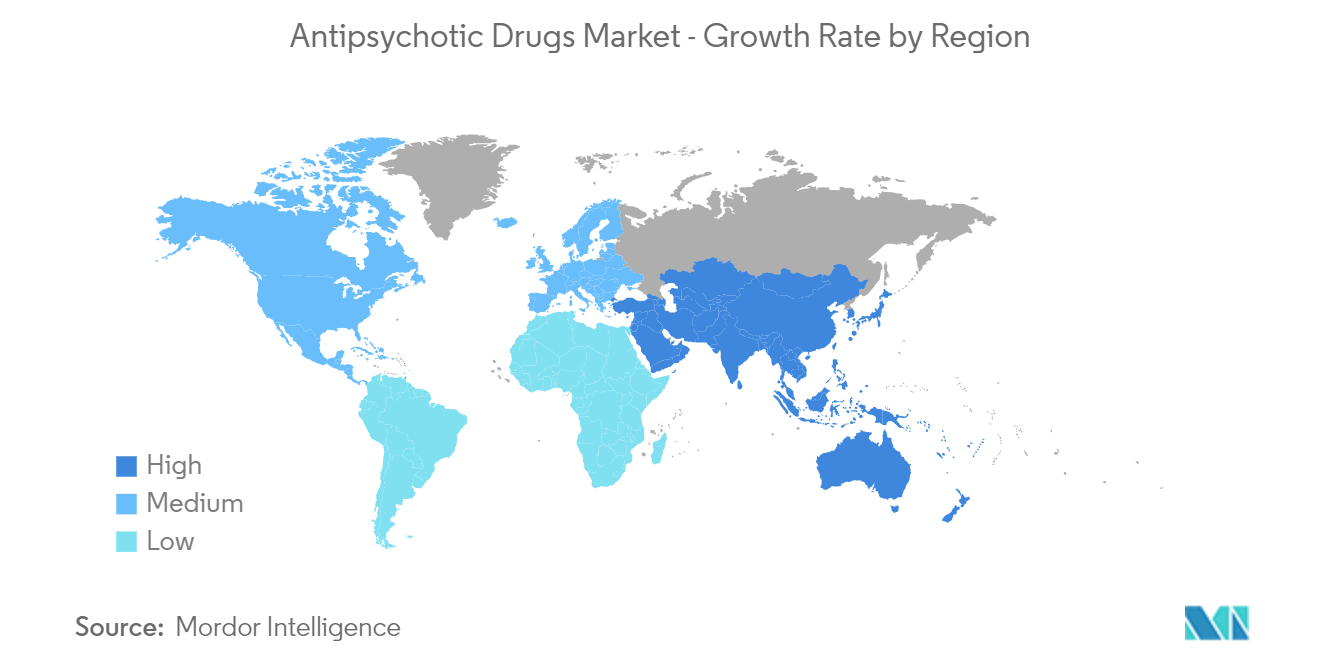Market Trends of Antipsychotic Drugs Industry
Schizophrenia is Expected to Hold Major Share in the Market over the Forecast Period
Schizophrenia is a severe mental disorder that affects a large number of people across the globe. Distortions in thinking, emotions, and sense of self and behavior mainly characterize the disease. The increasing prevalence of Schizophrenia and associated disorders is the key factor driving the market's growth over the forecast period. This, coupled with the rising geriatric population, who are more susceptible to late-onset Schizophrenia, is also raising the demand for available drugs for Schizophrenia.
For instance, according to the World Health Organization, in 2022, Schizophrenia affected 24 million people worldwide. Furthermore, due to the increasing incidence of Schizophrenia among the older population, this number is likely to increase owing to the global aging population. For instance, according to a report published by United Nations in 2022, the share percentage of older adults worldwide is projected to increase from 10% in 2022 to 16% by 2050. The aging population is more susceptible and prone to neurological disorders and continues to experience worse situations later in life. This results in increased demand for antipsychotic drugs among these patient groups for Schizophrenia. For instance, according to an article published by Informa UK Limited in April 2022, aging populations in developed nations are leading to more older adults with psychiatric disorders. Also, according to an article published by Healthline India in May 2022, people with Schizophrenia experienced the worst symptoms in the first episode of psychosis, which increases in later life as age increases. Thus, the increasing geriatric population, along with the increased susceptibility towards Schizophrenia, is driving the product demand and is instrumental for segmental growth.
Additionally, with the growing burden of Schizophrenia, the demand for advanced therapeutics is increasing. Hence, the launch of novel drugs in the market is further expected to boost the market growth over the forecast period. For instance, on September 2021, the Food and Drug Administration accepted Teva Pharmaceuticals and MedinCell's new drug application (NDA) for TV-46000/mdc-IRM, used to treat Schizophrenia.
Thus, the increased prevalence of Schizophrenia and the rising number of product approval by the regulatory authorities are likely to boost the segmental growth during the forecast period.

North America is Expected to Dominate the Market Over the Forecast Period
North America is expected to dominate the market share, owing to its well-established healthcare infrastructure and better regulatory framework. Furthermore, the increasing prevalence of mental disorders and government support in the countries of this region for mental disorders are also anticipated to fuel regional growth over the study period. For instance, according to a report published by National Center for Biotechnology Information in March 2023, 57.8 million adults in the United States had mental illness in 2021. According to an article published by National Center for Biotechnology Information in March 2021, approximately 6.2 million people in the United States of 65 years and older had Alzheimer's dementia in 2021. Also, per the report published by the Alzheimer Society of Canada, in September 2022, an estimated 1.7 million Canadians are expected to live with dementia by 2050. This increasing patient population over the year in this region is raising the demand for antipsychotic drugs. It is anticipated to foster the growth of this region in the market over the forecast period.
Furthermore, the companies are focusing on adopting various business strategies such as collaborations, product launches, acquisitions, and partnerships to withhold their position in the antipsychotic drug market is likely to boost the market growth. For instance, in October 2022, Lupin launched Paliperidone Extended-Release Tablets to treat schizophrenia in the United States.
Hence, the rising prevalence of mental illness, schizophrenia, and dementia in the region and increased R&D efforts by market players to introduce advanced drugs are expected to drive market growth in the forecast period.


